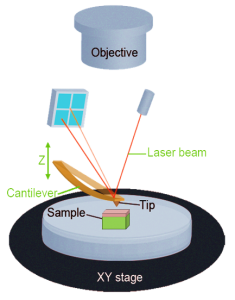In the first GloMeca, we talked about visco-elasticity and why skin is considered as a viscoelastic material.
As a result of this viscoelastic behaviour, the skin mechanical response to forces involves both a viscous characteristic associated with energy dissipation and an elastic characteristic associated with energy storage.
Why talking about Hysteresis?
The literature says that hysteresis is “a lagging or retardation of the effect, when the forces acting upon a body are changed, as if from velocity or internal friction”.
From a mechanical point of view, skin can be compared to a composite material with a very-organized structure. Due to that complex structure, skin is a strongly anisotropic material, and we can explain its viscoelastic behaviour through the hysteresis in the stress-strain relationship.
In Biophysics, hysteresis is defined as the energy lost within the tissue between loading and unloading.
Hysteresis is caused by internal friction of a material. This internal friction is responsible for dissipating mechanical strain energy to heat.
When the skin is stimulated repetitively with constant load peak, as Atomic Force Microscope does, the load-deformation curves shift in a load-elongation diagram and the hysteretic effects diminish.
Why AFM?
As a reminder, in the AFM tapping mode, usually used for soft samples as skin, the cantilever is set to oscillate vertically at its resonant frequency. Once the tip is far away from the sample, the cantilever oscillates with constant amplitude, whereas for smaller tip-sample distances, the amplitude of the oscillations is lowered.
Differences between the set drive phase and phase of the cantilever response can be used to gain an insight into viscoelastic and adhesive properties of the sample under study.

Bending of the cantilever is determined as a function of the displacement of the piezo scanner, whereas the force sensed by the cantilever is calculated based on Hooke’s law (the bending or deflection of the cantilever is multiplied by the spring constant).

The approaching curve (in blue) gives information about repulsive or attractive forces. Then, we have the contact of the cantilever with the sample (or contact point) that allows to study mechanical properties. At the end, the retracting curve (in red) provides information about adhesion forces.
The area between blue and red curves represents hysteresis. Measuring this ratio gives a lot of information, mainly about elastic behaviour of a material. In fact, we obtain parameters of visco-elasticity through the overtime measure of hysteresis.
Skin elasticity is a property of the skin that enables it to recover shape when stretched or deformed, whereas skin visco-elasticity incorporated the water content of the skin and has a crucial role in skin barrier protection.
Furthermore, skin visco-elasticity changes in lifespan and researchers have found that aging and sun/UV light exposure can decrease it (Thakur, Batheja, Kaushik, & Michniak, 2008).
In that way, Atomic Force Microscopy looks like a relevant tool to investigate skin visco-elasticity and help to develop adequate skin treatments.
Follow our other news
The relationship between skin elasticity and viscoelasticity
 24 January 2024
24 January 2024Are you a smoker? Here’s how it affects your skin!
 29 November 2022
29 November 2022Why are simplicity and multifunctionality new trends in the beauty market?
 19 October 2022
19 October 2022



